Elements Of Sculpture Borobudur / Kamadhatu (realm of desire), rupadhatu (realm of form), and
Elements Of Sculpture Borobudur / Kamadhatu (realm of desire), rupadhatu (realm of form), and
Borobudur's vertical organization reflects Buddhist cosmology, according to which the universe is divided into three superimposing spheres: kamadhatu (desire), rupadhatu (forms) and arupadhatu.
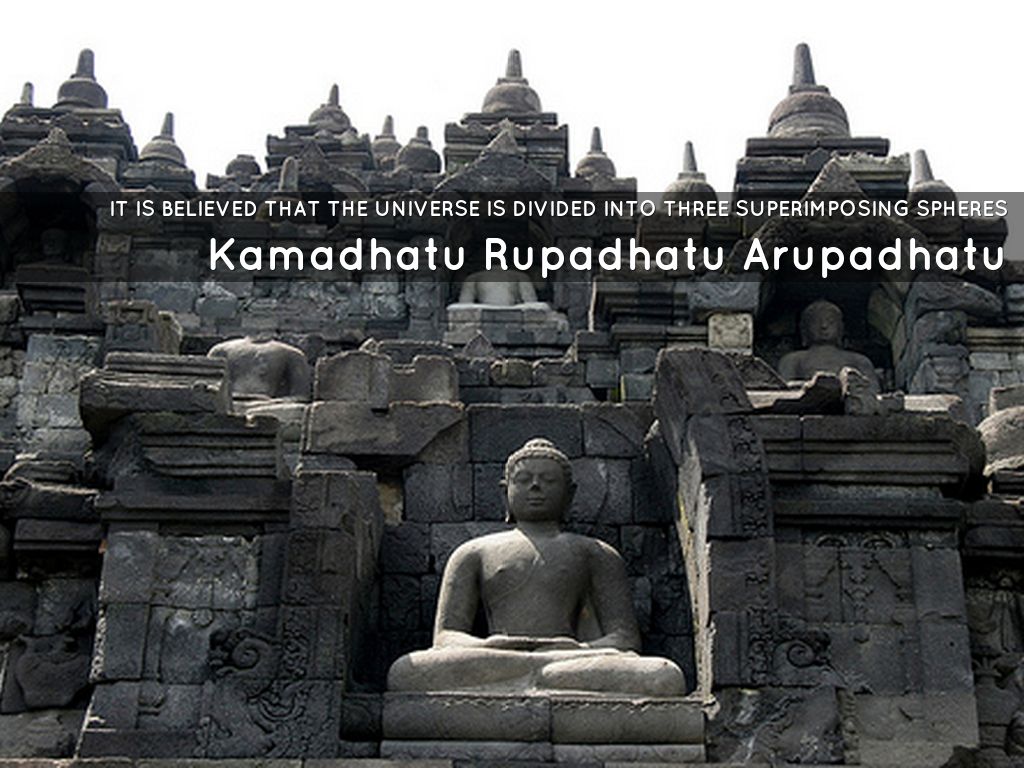
Borobudur Temple by Bea Fajardo
Kamadhatu berarti "kawasan nafsu" yang terdiri dari 2 lantai kaki terbawah termasuk bagian dasar yang tertutup di bawahnya. Adapun Rupadhatu, yang berarti "dunia antara" atau kawasan terikat pada wujud-wujud, merupakan bagian tengah dari lantai ketiga sampai tujuh di Candi Borobudur. Sementara itu, Arupadhatu adalah kawasan yang.

Kamadhatu, Rupadhatu, and Arupadhatu YouTube
Yogapedia Explains Arupadhatu . Arupadhatu is equated with the state of samadhi in Hinduism and yoga. As the highest realm, arupadhatu is preceded in the spiritual journey by rupadhatu (the material world) and kamadhatu (the sensory plane). In the highest plane, beings exist without physical bodies and have transcended physical sensations.

Borobudur A corridor on the Rupadhatu layer
Borobudur, Indonesia (photo: Andrea Kirkby, CC BY-SA 2.0) Located on the island of Java in Indonesia, the rulers of the Śailendra Dynasty built the Temple of Borobudur around 800 C.E. as a monument to the Buddha (exact dates vary among scholars). The temple (or candi in Javanese, pronounced "chandi") fell into disuse roughly one hundred.
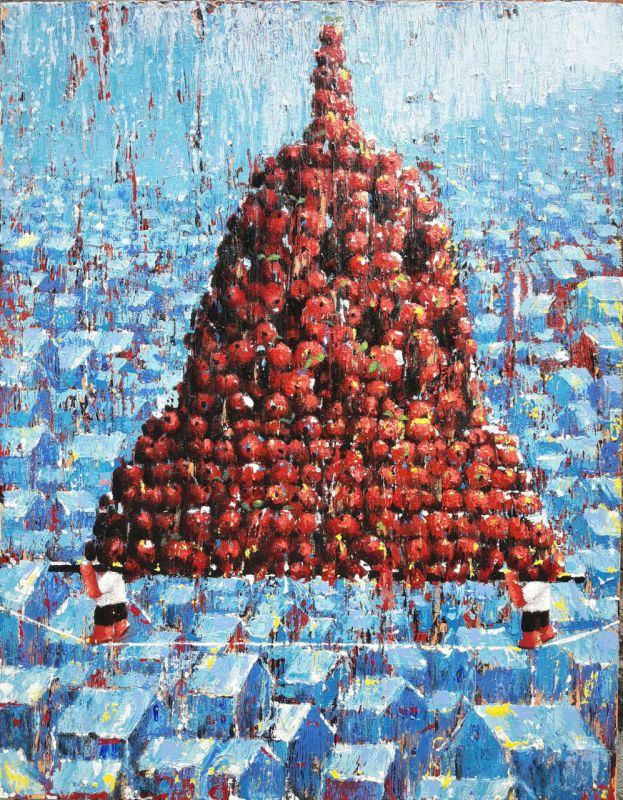
Elements Of Sculpture Borobudur / Kamadhatu (realm of desire), rupadhatu (realm of form), and
Kamadhatu Consciousness. Many scientists have conducted research at Borobudur, perhaps yielding many doctoral degrees. However, to this day, discussions have not been enlivened by ways and efforts to enhance awareness from the Kamadhatu phase to the Rupadhatu, and from the Rupadhatu to the Arupadhatu.

tingkatan tingkatan candi borobudur Jason Poole
Kamadhatu, Rupadhatu, and Arupadhatu [8]. These three spheres are reflected in the multi-level (3 parts, 10 levels) design of the temple itself [9], which is a physical reflection o f the .

Kamadhatu Layer
The architecture of Borobudur mostly tells about the story of human being which tells about the symbol of the Buddhist universe as well known as Kamadhatu, Rupadhatu, and Arupadhatu. The relief of Kamadhatu represents the human's life, it describes the behaviour that still get along with the lust.
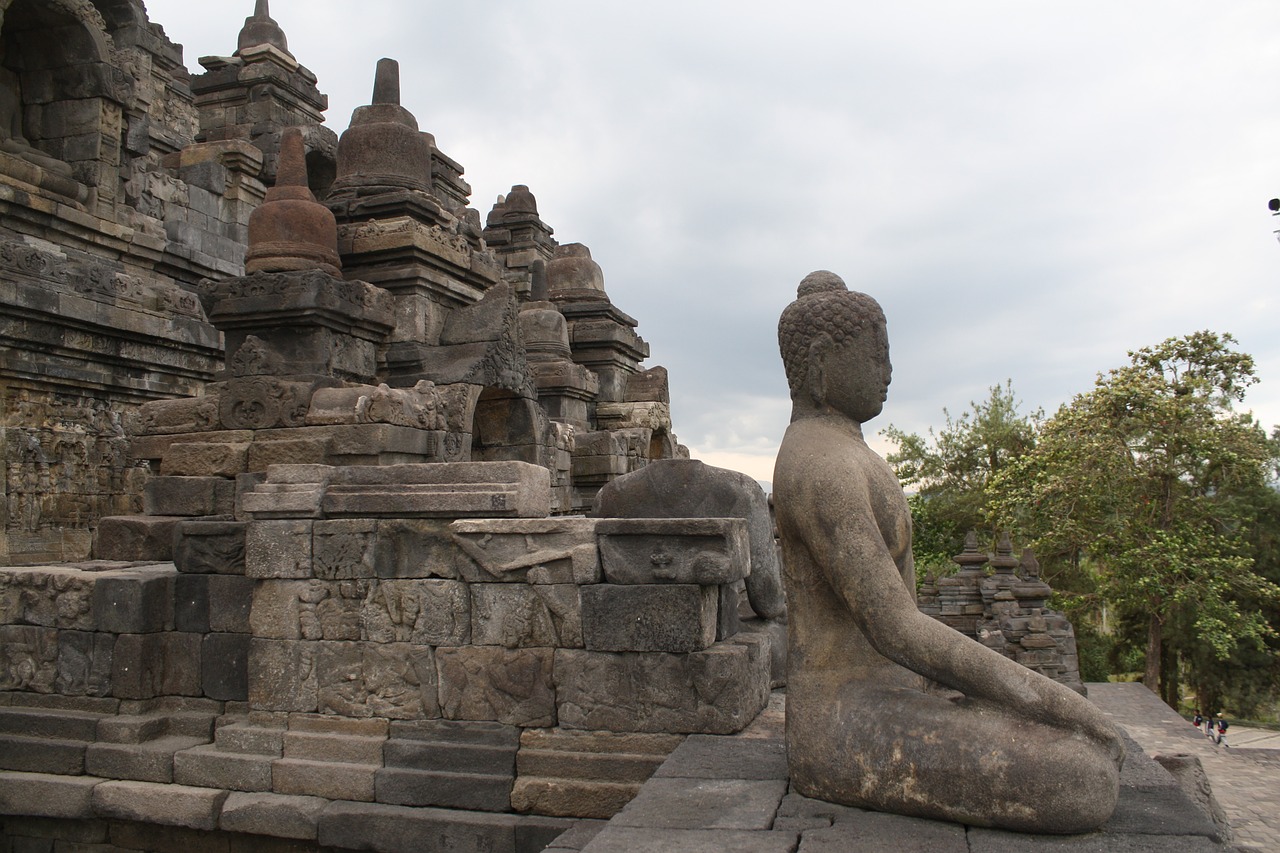
Elements Of Sculpture Borobudur / Kamadhatu (realm of desire), rupadhatu (realm of form), and
A structure on the Kamadhatu layer of the Borobudur Temple The Borobudur monument is about Buddhist philosophy and Gauthama Buddha's birth, life, death, and enlightenment. According to Buddhist philosophy, human beings need to go through three realms, Arupadhatu, Rupadhatu, and Kamadhatu, to attain enlightenment.

Pin di Buddha, Buddhism and Meditation
Kamadhatu (the realm of feeling) The lowest level, which is partially hidden, is the structure's base and contains hundreds of reliefs of earthly desires and the law of cause and effect. It showcases human behaviors such as robbing, torture, and killing. This level is the lowest realm of the Buddhist universe. Rupadhatu (the realm of form)
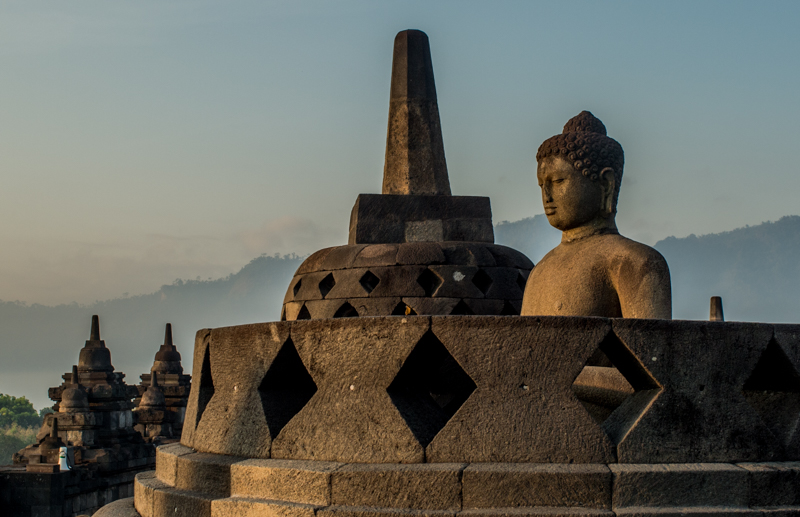
Sunrise at the Borobudur Temple Vita in Motu
At Borobudur Temple, the kamadhatu is represented by the base, the rupadhatu by the five square terraces, and the arupadhatu by the three circular platforms as well as the big stupa. The whole structure shows a unique blending of the very central ideas of ancestor worship, related to the idea of a terraced mountain, combined with the Buddhist.
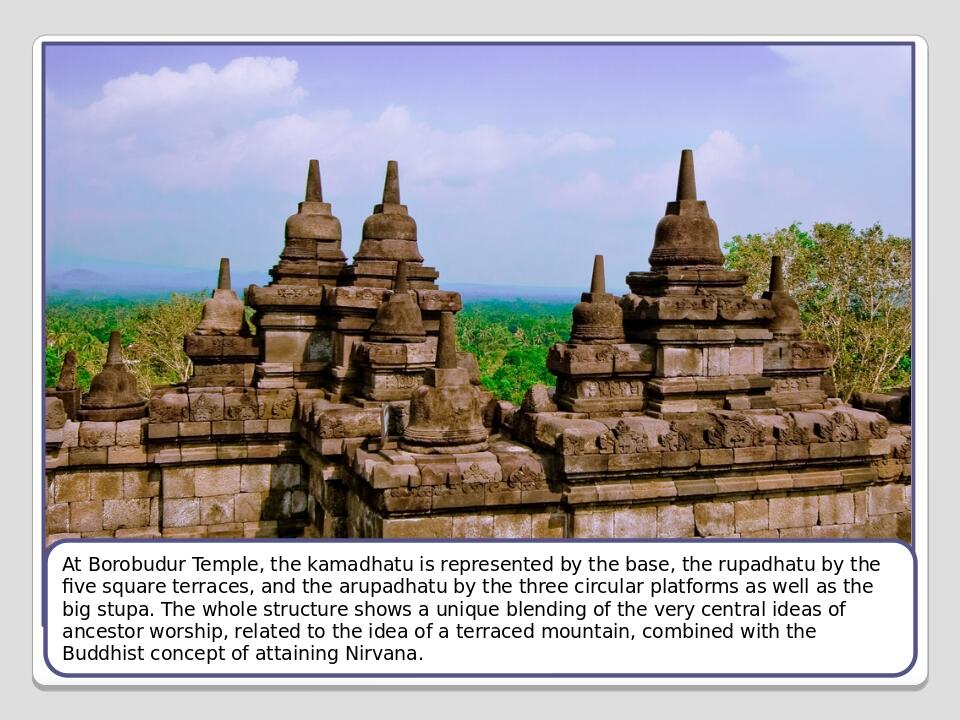
Презентація "UNESCO World Heritage Sites. Borobudur Temple Compounds (Indonesia)"
The kamadhatu is represented by the base, the rupadhatu by the five square terraces, and the arupadhatu by the three circular platforms as well as the big stupa. The whole structure shows a uniquely Javanese blending of the very central ideas of ancestor worship, related to the idea of a terraced mountain, combined with the Buddhist concept of attaining Nirvana:

Bangunan Candi Borobudur terdiri atas tiga tingkatan, yai...
Dua ranah lainnya adalah Kamadhatu (alam nafsu indrawi), Arupadhatu (alam tanpa wujud). [1] Sesuai namanya ranah ini adalah ranah fisik yang utama; seluruh penghuninya memiliki lokasi dan tubuh, akan tetapi tubuh ini terdiri atas kandungan zat halus yang tidak terlihat oleh penghuni Kāmadhātu.
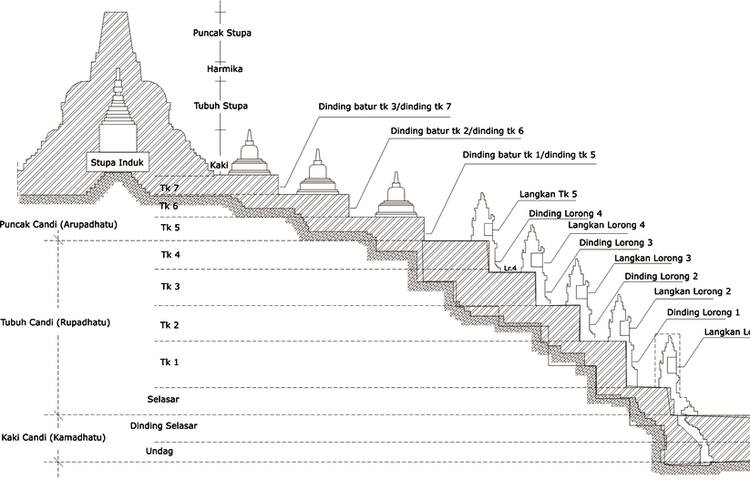
Tingkatan Candi Borobudur Kamadhatu, Rupadhatu, dan Arupadhatu
The desire realm (Sanskrit: कामधातु, kāmadhātu) is one of the trailokya or three realms (Sanskrit: धातु, dhātu, Tibetan: khams) in Buddhist cosmology into which a being caught in saṃsāra may be reborn.The other two are the Form Realm, (Sanskrit rūpadhātu) and the Formless Realm (S. ārūpadhātu).. Within the desire realm are either five or six domains (Sanskrit.

Sunrise at the Borobudur Temple Vita in Motu
The three spheres are Kamadhatu, Rupadhatu, and Arupadhatu, and represent the sphere of desires, the sphere of forms, and the sphere of formlessness, respectively. Finally, the very top of the.
Arupadhatu Buddha, 8th century Buddhist Stock Photo
Berbahan dasar batuan andesit, Candi Borobudur terdiri atas 10 lantai dengan setiap tingkatan yang memiliki makna tersendiri. Baca juga: PT TWC Dukung Pembatasan Kuota dan Tiket Khusus Naik Candi Borobudur. Secara vertikal, tiga tingkatan pada Candi Borobudur disebut dengan Kamadhatu, Rupadhatu, dan Arupadhatu. Lihat Foto.
A Mandala plan of Borobodur, based on HinduBuddhist cosmology. Red... Download Scientific Diagram
The Buddhist universe is divided into three regions that correspond with ethical categories: Kamadhatu (desire), Rupadhatu (form), and Arupadhatu (formlessness).. Kings of the Four Directions belong to the lowest region of six devaloka (realm of the celestial beings) within the Kamadhatu called Caturmaharajakayikas.